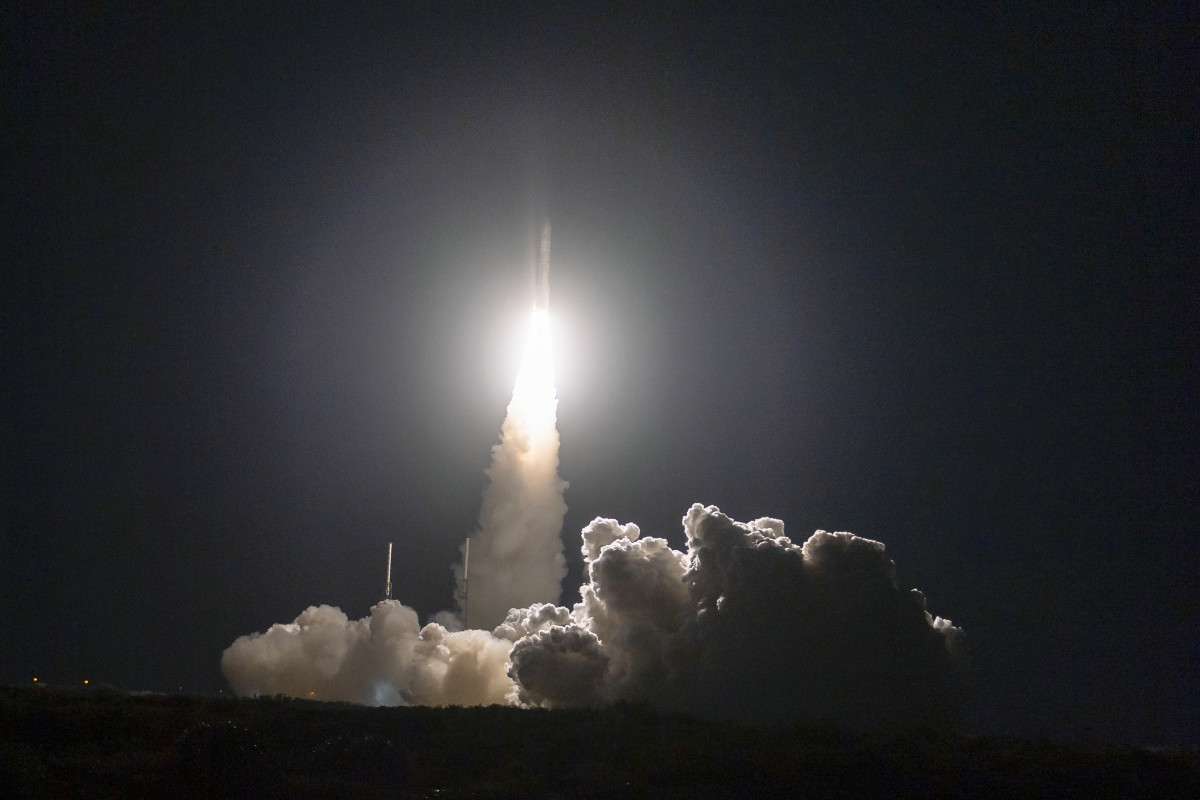
United Launch Alliance (ULA) early Monday morning successfully completed the inaugural launch of its next-generation Vulcan rocket. The rocket has been in development at ULA for about a decade, having recently overcome months of delays and setbacks.
The flight — the first of two certification flights required by the U.S. Space Force — is carrying two payloads: the Celestist Memorial deep space Voyager mission and Astrobotic's first Peregrine Lunar Lander.
The Peregrine craft will attempt to touch down on the moon's surface on Feb. 23, where it could potentially become the first U.S. soft landing on the moon since Apollo 17, Apollo's final mission, in 1972.
Related: The environmental dichotomy of Tesla CEO Elon Musk
If successful, such a landing would also represent the first-ever moon landing by a private company.
Astrobotic's lunar lander, according to a statement from the company, successfully separated from the Vulcan rocket and powered on as expected. The team did however note an anomaly that is preventing the craft from achieving a sun-pointing orientation, something the team is actively working to address.
ULA President and CEO Tory Bruno said in a statement that Vulcan will provide a combination of high performance, affordability, precision and reliability to aerospace customers.
"Vulcan’s inaugural launch ushers in a new, innovative capability to meet the ever-growing requirements of space launch,” he said. "Vulcan continues the legacy of Atlas as the world’s only high-energy architecture rocket.”
LIFTOFF of the first United Launch Alliance #VulcanRocket! pic.twitter.com/wZMlPxWr4l
— ULA (@ulalaunch) January 8, 2024
The debut success offers a big boost to ULA and its customers; the company says it has so far sold more than 70 Vulcan launches, 38 of which were purchased for the pending launch of Amazon's Project Kuiper satellite constellation.
Vulcan's engines were made by Blue Origin, Jeff Bezos' rocket company, which itself is targeting 2024 for the inaugural launch of its New Glenn rocket, which will be powered by the same engines.
Bruno said that ULA is working toward achieving a bi-weekly launch rate by 2025 amid its development of rocket reusability as it aims to catch up to SpaceX, which launched 96 rockets throughout 2023 and is targeting 144 missions in 2024.

The launch comes as Boeing (BA) -) and Lockheed Martin (LMT) -), which jointly own ULA, are in the midst of attempting to sell the company, according to Reuters. Talks of an acquisition have been ongoing for more than a year, sources said.
“The successful development and flight of this evolutionary rocket is a true testament to the unrivaled dedication and ingenuity of our workforce,” Mark Peller, vice president of Vulcan Development, said in a statement. “Vulcan’s purpose-built design leverages the best of what we’ve learned from more than 120 combined years of launch experience with Atlas and Delta, ultimately advancing our nation’s space capability and providing unprecedented mission flexibility.”
This latest launch represents an ongoing ramp in commercial spaceflight that has some environmental scientists concerned about the impact of rocket-based soot injection in the upper layers of the atmosphere, something that is known to weaken the ozone layer and increase the warming of those upper atmospheric layers.
Contact Ian with tips via email, ian.krietzberg@thearenagroup.net, or Signal 732-804-1223.
Related: Jeff Bezos thinks Elon Musk must be a 'very capable leader'
Get exclusive access to portfolio managers’ stock picks and proven investing strategies with Real Money Pro. Get started now.







